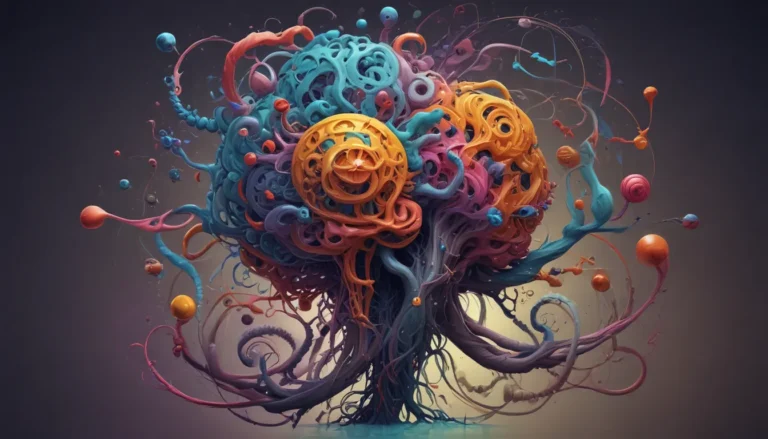A Note About Images: The images used in our articles are for illustration purposes only and may not exactly match the content. They are meant to engage readers, but the text should be relied upon for accurate information.
Welcome to the world of radium, a fascinating element that shines brightly in the realm of science and history. Discovered by the pioneering duo, Marie and Pierre Curie, radium has a captivating story that transcends its presence on the periodic table. Join us as we explore the luminous legacy of radium through 17 great fun facts that will enlighten your knowledge and spark a curiosity for the lesser-known tales of the atomic world. Buckle up for a radiant ride as we delve into the glow-in-the-dark charm, historical significance, and modern applications of radium.
Unveiling the Mysteries of Radium
What is Radium?
Radium, with the symbol Ra and atomic number 88, is a radioactive, silvery metal that reacts uniquely with nitrogen instead of oxygen upon exposure to air. Discovered by Marie and Pierre Curie in 1898, radium originates from the mineral uraninite and has a rich history in various applications, particularly in glow-in-the-dark products like watches, clocks, and aircraft switches. Despite its intriguing properties, radium’s intense radioactivity has led to cautionary measures in its usage.
The Discovery of Radium
Marie and Pierre Curie’s groundbreaking discovery of radium in 1898 sprung from their investigation into pitchblende’s intense radioactivity, leading to the isolation of this new element and its subsequent implications in scientific research.
The Uses of Radium
In the early 20th century, radium found its way into self-luminous paints used in watches, clocks, and instrument dials, creating a glowing effect. It also made appearances in products like toothpaste, hair creams, and food items, believed to offer health benefits. However, safety concerns led to the discontinuation of these practices.
Shedding Light on Radium’s Hazards
The Hazards of Radium
Prolonged exposure to radium can result in serious health issues, including anemia, bone fractures, and cancer, particularly bone cancer. The tragic tale of the Radium Girls, factory workers who suffered from radiation poisoning, sparked greater regulatory oversight of radioactive materials.
Radium in Nature
While radium is not found free in nature, it exists in trace amounts in uranium and thorium ores. This element can be present in hot springs and groundwater, contributing to the presence of radon gas in homes built over radium-rich soil.
Radium: A Glowing Legacy in Science and Medicine
Scientific Research and Radium
Radium’s crucial role in early research into radioactivity, coined by Marie Curie herself, paved the way for advancements in nuclear physics. Today, radium-223 dichloride serves as a radioactive therapeutic agent in treating bone metastases from prostate cancer, showcasing the ongoing relevance of radium in medicine.
Radium’s Place in Popular Culture
The allure of radium’s glow inspired its use in various glow-in-the-dark products, though many of these applications have been phased out due to safety concerns. The story of radium, particularly the tragic experiences of the Radium Girls, has been immortalized in books, plays, and films, emphasizing the importance of workplace safety in the presence of radioactive materials.
Navigating Radium’s Environmental Impact
Environmental Impact of Radium
The challenges of radium’s radioactivity extend to its disposal, requiring careful handling to prevent environmental contamination. Water treatment plants monitor radium levels to uphold safety standards and safeguard public health from its potential hazards.
Embracing Radium’s Legacy and Future
Radium’s Legacy
Despite the risks associated with radium, its contributions to atomic theory and the study of radioactivity have significantly impacted modern science. The cautionary tale of radium’s intense radioactivity serves as a reminder of the dual nature of scientific discoveries, balancing benefits and risks in their applications.
A Final Peek at Radium’s Radiant Realm
As we conclude our journey through the radiant realm of radium, we reflect on its mysteries, marvels, and cautionary tales. From its discovery to its historical and modern applications, radium stands as a symbol of human curiosity and scientific breakthrough, urging us to handle such powerful elements with care and respect for their impacts on society and the environment.
Intriguing Facts about Radium
- Radium, discovered by Marie and Pierre Curie, was once a common element in glow-in-the-dark products but poses health hazards due to its intense radioactivity.
- The Radium Girls, factory workers exposed to radium while painting watch dials, faced severe health consequences, leading to increased regulatory oversight of radioactive materials.
- Radium’s presence in nature is limited, existing in trace amounts in uranium and thorium ores.
- Radium’s historical significance in scientific research and ongoing medical applications showcase its enduring relevance.
- Radium’s glow-in-the-dark allure captivated popular culture, though safety concerns have led to the discontinuation of many radium-based products.
Frequently Asked Questions about Radium
Q: What exactly is radium?
A: Radium is a radioactive, silvery metal famous for its glow-in-the-dark properties, discovered by Marie and Pierre Curie in 1898.
Q: How does radium glow?
A: Radium’s glow results from its radioactivity, which excites nearby atoms in materials, such as phosphorescent paint, creating a luminous effect.
Q: Is radium dangerous?
A: Yes, radium can be hazardous if ingested or inhaled, potentially leading to health issues like anemia, bone fractures, and cancer.
Q: Where can you find radium?
A: Radium is found in small amounts within uranium ores, mined in various locations worldwide.
Q: Why was radium popular in the past?
A: Radium’s glowing property captivated people in the early 20th century, leading to its use in various products.
Q: How is radium used today?
A: Radium is utilized in medical treatments and scientific research under strict safety protocols to prevent exposure risks.
Q: Can radium be found in everyday items?
A: While radium is not commonly found in household items today, it was once prevalent in products like luminous watches and clocks.
Q: What’s the future of radium?
A: Radium’s future lies in advancing medical treatments and scientific studies, inspiring curiosity and caution in its applications.
Conclusion
As we wrap up our radiant journey through the world of radium, we have uncovered the fascinating tales of discovery, applications, and hazards associated with this unique element. Remember, while radium’s glow may illuminate paths in science and medicine, its story also serves as a reminder of the importance of handling radioactive materials with care and respect. Let the glow of radium inspire you to delve deeper into the complexities of scientific discoveries and their impacts on society, embracing both the benefits and risks that come with exploring the mysteries of the atomic world.






